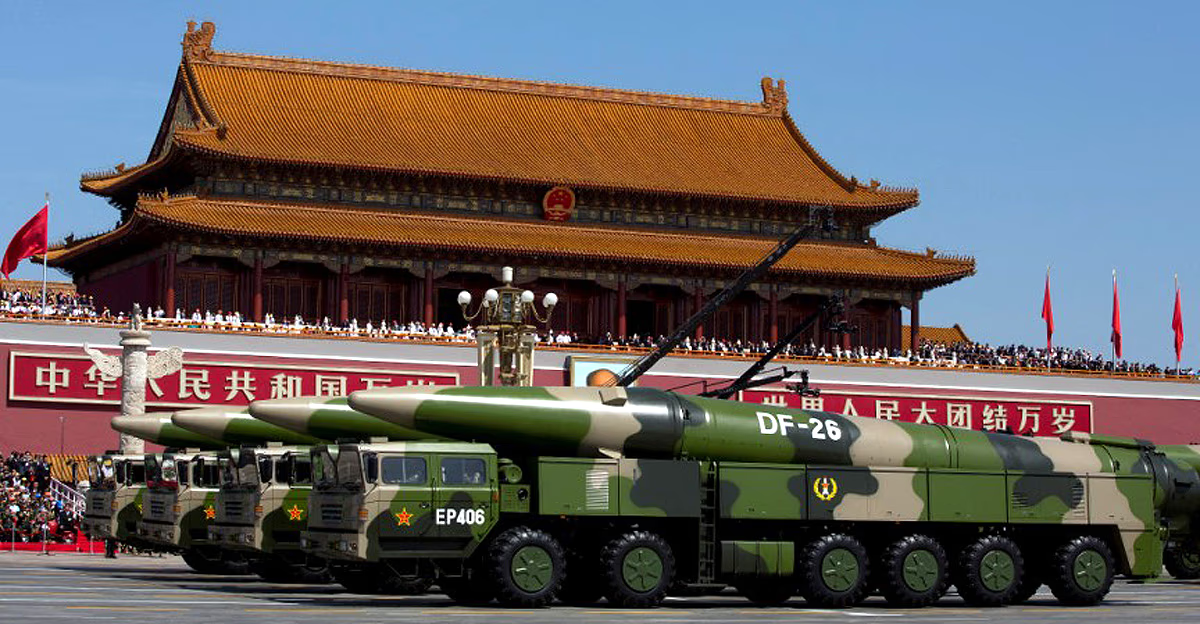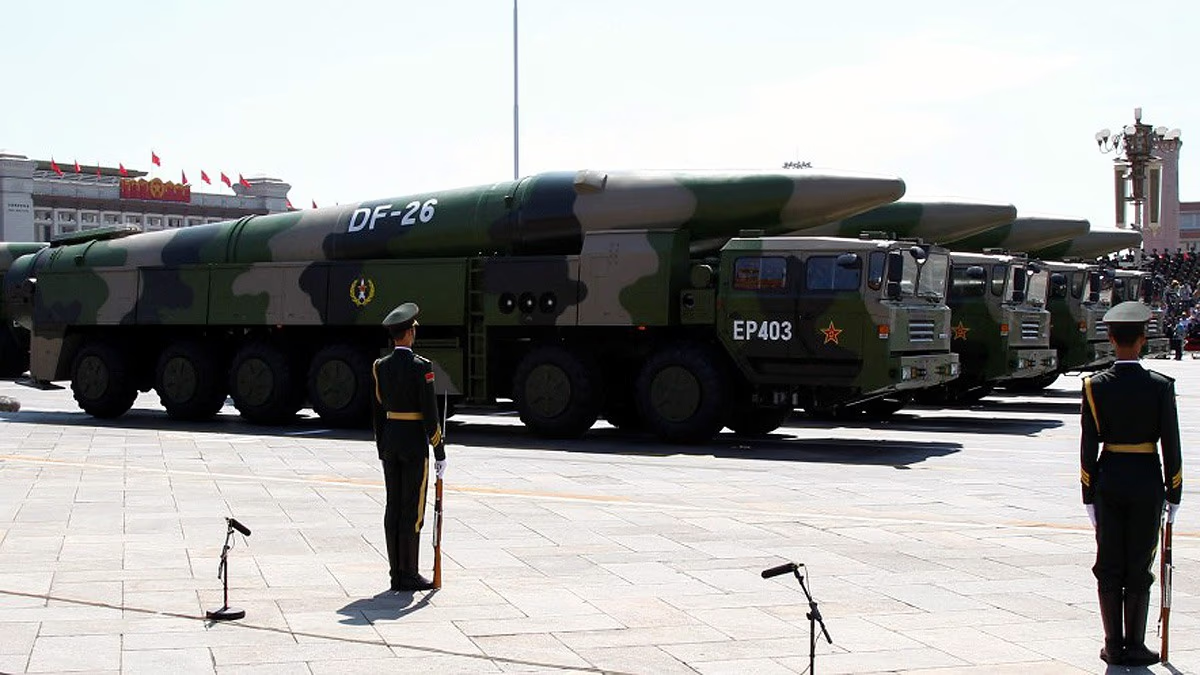China has put its latest DF-26D missile to the test, capable of carrying either a hypersonic or maneuvering warhead. Officially showcased during a parade in Beijing on September 3, 2025, this missile enhances China's strike capability across the Pacific Ocean, bringing increased risk to Guam and American carrier groups.
The DF-26 family is a key weapon of the People's Liberation Army Rocket Force (PLARF) and is often referred to as the 'Guam Killer'. The original DF-26 appeared in the mid-2010s with a range of approximately 4,000 kilometers, able to deliver nuclear or conventional payloads. It employs inertial navigation with satellite updates to target stationary land or large naval vessels, though its effectiveness against naval targets is limited.
The DF-26D was first spotted during parade rehearsals in August 2025, with social media videos later confirming launches in September. The distinctive plume and trajectory matched the DF-26 series, though changes were apparent, prompting experts to categorize it as the DF-26D.
Open-source reports indicate its range may extend over 5,000 kilometers, surpassing the DF-26B's 4,000 km range, thus placing Guam's Andersen Air Force Base and American naval groups at extended risk. Chinese reports suggest it carries a hypersonic glide vehicle capable of high-speed maneuvers, potentially outmaneuvering American missile defenses.
The DF-26D boasts dual-capabilities — nuclear or conventional — with improved guidance systems, active terminal seekers, and electronic countermeasures, enhancing its anti-ship role. It threatens U.S. carrier strike groups, supporting Beijing's A2/AD (Anti-Access/Area Denial) strategy to deter adversaries in the Western Pacific.

Source: aajtak
Evidence from tests, imagery, and parade confirmations indicate that the DF-26D will soon enter deployment. Its hypersonic warhead, extended range, and advanced guidance mark it as the next generation of the 'Guam Killer', a significant leap in China's missile modernization.
This missile poses a formidable challenge to the US Navy, placing bases like Guam and carrier groups in greater jeopardy. The PLARF's strike capabilities are set to rise, and with it, tensions in the Indo-Pacific. The U.S. may need to conceive new defense strategies in response. China's missile technology continues to advance, and the world should remain vigilant.




